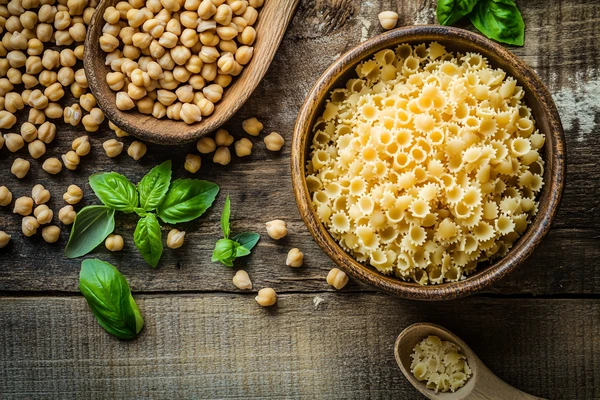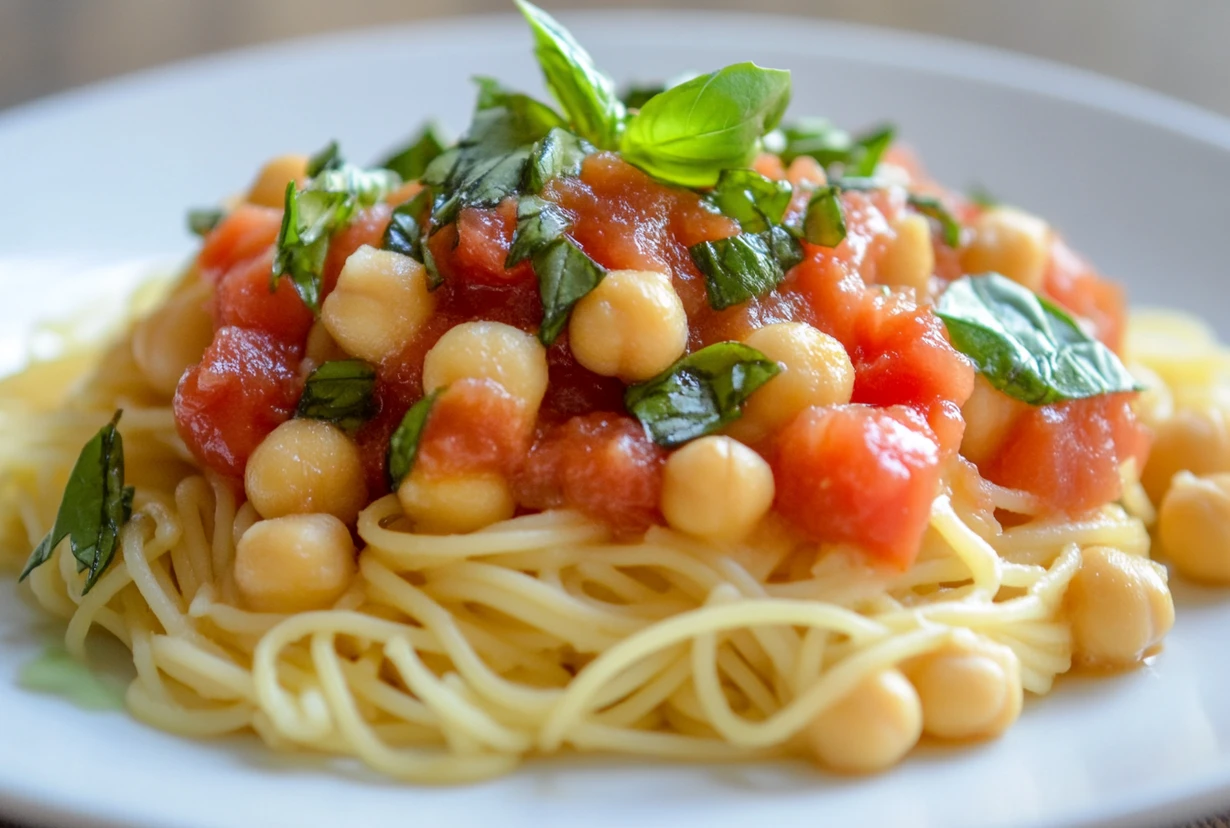If you’ve been exploring healthier alternatives to traditional pasta, you’ve likely come across chickpea pasta. But before swapping out your favorite spaghetti or penne, you might wonder, does chickpea pasta taste like pasta? This question has sparked curiosity among food lovers looking for nutritious options without sacrificing flavor. Let’s uncover the answer in this comprehensive guide.
Introduction
Chickpea pasta has become a go-to choice for those seeking a healthier, protein-packed alternative to traditional wheat pasta. Made primarily from ground chickpeas, it’s marketed as a nutritious option that caters to a variety of dietary needs. However, for many, the big question remains: does chickpea pasta taste like pasta? This guide delves into the flavor, texture, and overall experience of chickpea pasta to help you decide if it’s a worthy addition to your pantry.
While traditional pasta is beloved for its mild taste and tender texture, chickpea pasta offers a slightly different culinary experience. Yet, with the right preparation and pairing, it can create meals just as satisfying as classic dishes. Whether you’re a pasta enthusiast or exploring plant-based options, understanding the nuances of chickpea pasta will ensure you know what to expect when making the switch.
What Is Chickpea Pasta?

The Basics of Chickpea Pasta
Chickpea pasta is crafted from chickpea flour, often combined with other legumes like lentils or peas. Unlike traditional pasta made from refined wheat, it stands out as a naturally gluten-free option, packed with higher amounts of protein and fiber. This makes it an appealing choice for health-conscious individuals or those following specific diets such as low-carb or plant-based plans.
Nutritional Benefits of Chickpea Pasta
What makes chickpea pasta unique is its impressive nutritional profile. Rich in protein, fiber, iron, and potassium, it delivers essential nutrients that promote overall health while offering sustained energy. Its wholesome composition positions it as a nutrient-dense alternative to traditional pasta, making it a great choice for balanced meals.
Versatility in Cooking
Available in various shapes like spaghetti, penne, rotini, and shells, chickpea pasta is incredibly versatile. Its slightly nutty flavor and firmer texture provide a unique twist to classic dishes. From hearty spaghetti with marinara to refreshing pasta salads, chickpea pasta adapts well to a wide range of recipes, ensuring a satisfying culinary experience.
How Does Chickpea Pasta Compare to Traditional Pasta?
Texture: A Slightly Firmer Bite
When it comes to texture, chickpea pasta differs slightly from traditional wheat pasta. Traditional pasta is known for its smooth, tender bite that pairs seamlessly with any sauce. Chickpea pasta, on the other hand, has a firmer and slightly grainier texture, which can feel different for first-time tasters. However, with proper cooking—typically just a few minutes less than wheat pasta—it can achieve a pleasantly al dente consistency.
Taste: A Subtle Nutty Flavor
One of the most noticeable differences is the flavor. Chickpea pasta carries a mild, nutty taste that reflects its legume origins. While it doesn’t perfectly replicate the neutral flavor of traditional pasta, this subtle nuttiness can complement sauces and seasonings in unique ways. Creamy sauces, robust tomato-based recipes, and spiced dishes particularly shine with chickpea pasta, enhancing its distinct taste profile.
Cooking Experience
Chickpea pasta is just as easy to prepare as traditional pasta, with slight variations in boiling time to avoid overcooking. Some brands may foam during boiling due to their high protein content, but this is normal and doesn’t affect the final dish. The key is to follow the instructions carefully and taste-test along the way to achieve the best texture.
Overall Comparison
While chickpea pasta may not taste exactly like wheat pasta, it offers a unique experience that many find equally satisfying. Its firmer texture and nutty undertones bring new dimensions to traditional pasta dishes, making it a standout choice for those seeking variety and nutrition in their meals.
Why Try Chickpea Pasta?
1. Nutritional Benefits
Chickpea pasta isn’t just a trendy alternative; it’s a nutritional powerhouse. Packed with plant-based protein, it’s an excellent choice for those looking to meet their protein needs without relying on meat or dairy. A single serving often contains twice the protein and three times the fiber of traditional wheat pasta, making it a filling and energy-sustaining option. Additionally, chickpea pasta is rich in essential nutrients like iron and potassium, which support muscle function, oxygen transport, and overall energy levels.
2. A Better Option for Dietary Restrictions
For individuals with dietary restrictions, chickpea pasta is a game-changer. Being naturally gluten-free, it’s ideal for those with gluten intolerance or celiac disease. Moreover, it caters to plant-based eaters and anyone following low-carb or high-protein diets. This versatility allows chickpea pasta to fit seamlessly into a variety of lifestyles while still providing the comfort of a pasta dish.
3. Culinary Versatility
One of the best things about chickpea pasta is its ability to adapt to a wide range of recipes. Its firm texture makes it a great choice for hearty sauces like bolognese, while its nutty flavor pairs beautifully with creamy or spiced dishes. It also works well in cold dishes, such as pasta salads, making it a versatile addition to your meal rotation.
4. A Sustainable Alternative
Chickpea pasta isn’t just good for you—it’s also better for the planet. Chickpeas require less water and fewer resources to grow than wheat, making them a more environmentally friendly crop. By choosing chickpea pasta, you’re supporting sustainable agriculture while enjoying a delicious and nutritious meal.
Why It’s Worth Trying
Whether you’re looking to boost your nutrition, accommodate dietary restrictions, or simply try something new, chickpea pasta offers an exciting alternative to traditional pasta. Its unique taste, firm texture, and countless recipe possibilities make it a standout option for anyone seeking healthier yet satisfying meals.
Tips for Cooking Chickpea Pasta Perfectly
Cooking chickpea pasta to perfection requires slightly different techniques compared to traditional pasta. Its unique composition calls for careful handling to achieve the best flavor and texture. Here’s how to get it right:
Boiling Tips
- Use Plenty of Water: Chickpea pasta can release starches that make the water foam, so use a larger pot with extra water to prevent overflow.
- Salt the Water Generously: Just like traditional pasta, salting the water enhances the flavor of chickpea pasta.
- Avoid Overcooking: Chickpea pasta cooks faster than wheat pasta. Start testing for doneness 1-2 minutes before the recommended time on the package to keep it al dente.
Enhancing Flavor
- Rinse After Boiling (Optional): If the pasta feels sticky, a quick rinse under cold water can help. However, if you’re adding sauce immediately, skip this step to maintain its starchiness for better sauce adherence.
- Choose Bold Sauces: Chickpea pasta’s nutty flavor pairs beautifully with robust sauces like marinara, pesto, or spiced coconut curry.
- Add Fresh Ingredients: Toss in sautéed vegetables, fresh herbs, or a sprinkle of cheese to complement its taste and add texture.
Cooking Tips Comparison Table
| Aspect | Chickpea Pasta | Traditional Pasta |
|---|---|---|
| Boiling Time | Shorter; check 1-2 minutes early | Standard; cook according to package instructions |
| Water Amount | Extra water needed to avoid foaming | Moderate; less foaming risk |
| Flavor Pairing | Nutty flavor works with bold and creamy sauces | Neutral flavor pairs with a variety of sauces |
| Texture | Firmer, grainier when overcooked | Tender and smooth |
By following these tips and experimenting with different sauces and ingredients, you can elevate chickpea pasta to create flavorful and satisfying meals.
What Do People Say About Chickpea Pasta?
Chickpea pasta has sparked a wide range of opinions among food enthusiasts. While some embrace its unique qualities, others find it takes some getting used to. Here’s a look at what people are saying:
1. Customer Reviews
Many users praise chickpea pasta for its nutritional benefits and versatility. It’s often highlighted as a great substitute for traditional pasta, especially for those on gluten-free or plant-based diets. Some reviews mention its satisfying texture when cooked al dente, making it a hearty addition to meals. On the other hand, a few first-time tasters note its slightly nutty flavor can be an adjustment if you’re used to the neutral taste of wheat pasta.
2. Common Opinions
- Texture: Many appreciate the firm, slightly chewy texture of chickpea pasta, while others prefer the smoother consistency of traditional pasta.
- Flavor: The nutty undertone is a favorite for some, adding depth to sauces, but it might stand out too much for those who prefer a more neutral base.
- Cooking Experience: Some users mention foaming during boiling as a minor inconvenience, but they find it manageable with a larger pot and plenty of water.
3. Popular Dishes
Chickpea pasta has proven to be a hit in dishes like:
- Creamy Alfredo pasta with roasted vegetables.
- Cold pasta salads with a tangy vinaigrette.
- Spicy tomato-based sauces with fresh herbs and garlic.
While opinions vary, chickpea pasta’s unique qualities make it a worthy option to try, especially if you’re looking for a nutritious and sustainable choice.
FAQs About Chickpea Pasta
Before making the switch to chickpea pasta, you may have some questions. Here are answers to the most frequently asked questions to help you better understand this popular pasta alternative.
1. Is Chickpea Pasta Gluten-Free?
Yes, chickpea pasta is naturally gluten-free, as it’s made from chickpea flour and, in some cases, other legumes. This makes it an excellent option for people with gluten intolerance or celiac disease.
2. Can Chickpea Pasta Be Used in All Recipes?
Absolutely! Chickpea pasta can replace traditional pasta in almost any recipe. Whether you’re making spaghetti and meatballs, creamy Alfredo, or a pasta bake, chickpea pasta holds up well in most dishes. Its firmer texture even works well in recipes that require reheating.
3. Does Chickpea Pasta Taste Different When Cold?
Like many pasta types, chickpea pasta’s texture firms up slightly when cold, but its flavor remains consistent. This makes it an excellent choice for cold pasta salads or meal prep dishes that are served straight from the fridge.
4. How Does Chickpea Pasta Pair with Sauces?
Chickpea pasta pairs beautifully with bold and flavorful sauces. Tomato-based sauces, creamy Alfredo, pesto, and spiced curry sauces all enhance its nutty flavor. Its ability to hold sauce well ensures every bite is flavorful.
5. What Are the Best Brands of Chickpea Pasta?
Some popular brands include Banza, Barilla Chickpea Pasta, and Explore Cuisine. Each offers a variety of shapes and slightly different textures, so you may want to try a few to find your favorite.
6. Is Chickpea Pasta More Filling Than Traditional Pasta?
Yes, chickpea pasta is more filling due to its higher protein and fiber content. These nutrients help you feel full longer, making it a satisfying option for meals.
Chickpea pasta answers the call for a healthier and versatile pasta alternative, and its ability to fit into different recipes and lifestyles has made it a kitchen staple for many.
Conclusion: Is Chickpea Pasta Right for You?
Chickpea pasta offers a delicious and nutritious alternative to traditional wheat pasta, making it a great choice for health-conscious eaters and anyone looking to diversify their meals. While it may not taste exactly like classic pasta, its slightly nutty flavor and firm texture can create equally satisfying dishes. From hearty pasta bakes to refreshing salads, chickpea pasta adapts well to countless recipes, ensuring there’s something for everyone.
If you’re ready to explore its potential, why not start with a creative twist? Try making a comforting chickpea pasta mac and cheese that’s both indulgent and healthy. Check out this detailed recipe guide on Chickpea Pasta Mac and Cheese: A Healthy Twist for a perfect introduction to this versatile ingredient.
Whether you’re prioritizing nutrition, exploring gluten-free options, or simply experimenting with new flavors, chickpea pasta is a worthy addition to your pantry that opens up a world of culinary possibilities.

